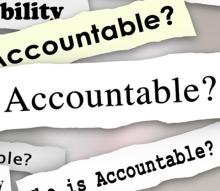In recent weeks, the National Institutes of Health, and other federal agencies have posted several positions for scientists that have captured the attention of interested fellows. To help you prepare, the Office of Training and Education (OITE) recommends that you view the NIH YouTube video, How to Apply for a Job with the US Government. In addition, here are some additional tips to help you prepare a strong federal job application. It takes time to review applications and fill out the application. Where are the positions and what GS level should I apply to as a Post Doc? All positions are posted in USAjobs.gov. There may be several positions posted that look similar so be sure to apply to those that are marked "Public" in the right-hand column if you are not employed in the federal government. Post docs are not qualified for MP (Merit Promotion) positions because it requires that you are a current federal government employee seeking promotion. Most postdocs apply for GS (General Service) 12-13 positions. Am I qualified for these jobs? Read job description and the Self-Evaluation Questionnaire. We recommend that you read the OITE careers blog on how to read federal job advertisements. Note that for federal jobs, there is a job description with qualifications and a required Self-Evaluation Questionnaire. Before you apply, we recommend printing (or saving a copy) of each job so you can highlight important skills including soft-skills (team, communication, leadership, etc.) that are required for each position. Later, when completing your application, it is crucial that you use the skills to assure you’re your resume is evaluated by the reader. On the questionnaire, be sure to give yourself credit by indicating the highest rankings of your skills and abilities and be sure that they are clearly stated on your resume. How much time should I spend on this? What kind of resume should I use? Don’t rush. Give yourself ample time to apply. Carve out 2-4 hours (at least) to complete the federal application profile and enter the information. While you have the option to upload a resume after you complete the profile, an HR reviewer recommended that applicants should use the federal resume builder because this is the format that they are accustomed to reviewing. Pay close attention to the suggested formatting (no use of bullets, use CAPS for keywords, using accomplishment statements). Follow the tutorial suggestions on the website has clear directions for how to complete a federal resume. I am a busy Post Doc. How can I best invest my time? Completing the federal resume will require that you have access to a lot of information (beyond that of a traditional resume) when completing your application. You will be investing wisely because there is no page limit, and the more you enter will have a direct impact on the salary level and offer that you will be made. To save time, before you apply, collect important documents such as copies of your transcripts, previous employer information address, salary, hours per week, previous supervisors’ name and phone number. Also collect the contact information for the references that you will use. You should include all training, relevant to the job, certifications, patents, skills grants, awards, leadership, the sciences from undergraduate through your post doc years. How can I make my experience stand out? As mentioned, be sure to follow the formatting described in the federal resume builder Be sure to utilize the skill words that you highlighted in the job description on your resume and give specific accomplishments. Here are two examples to help guide you (Please do not copy) Example 1: Ability to collaborate widely, both within NIH and outside the agency, and to work effectively as both a team member and team leader. Collaborated widely both inside and outside of the NIH. Managed scientific collaborations with a lab in another Institute at the NIH and additionally with the University of Texas. Team leader to set up timelines, phone calls, reagent swaps. Team member to strategize scientific directions, troubleshoot research challenges, perform experiments, and write publication. Example 2: Scientific and administrative management of a portfolio of grants, contracts, and fellowships including the stimulating, planning, advising, directing, and evaluating of program activities of research awards. Plan, advise, direct and evaluate scientific activities. Plan projects for self and team to understand the movement of group II introns. Advise peers and supervisor on best course of scientific direction including advocating to use a new method for understanding a scientific question. Direct a technician and masters student in daily activities including setting weekly goals, monitoring progress and adjusting experiments based on data collected. Evaluate scientific activities to understand biological mechanisms, troubleshoot challenges, provide options for new scientific methods, write reports and other publications. After you have followed the suggestions above, feel free to make an appointment with an OITE career services counselor . There are also many web-based and written guides, feel free to visit the OITE library and reviewing several helpful resources on applying for federal jobs including a Troutman's The Federal Resume Guidebook, 6th Edition to see additional federal resume examples. For our readers beyond the NIH, we suggest working with a career counselor in your area or through your university and visit your local library or bookstores.




